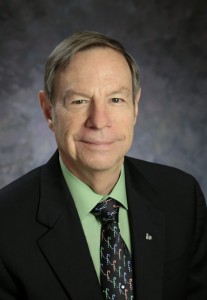A short course on
Penetration Dynamics
When: May 8-9, 2018
Instructor: Dr. Charles E. Anderson, Jr (CEA Consulting)
Location: Johns Hopkins University, Homewood Campus, Baltimore, MD
About the course:
This two-day short course will focus on the penetration response of metallic and brittle materials. The first day will focus on the penetration response of metals and the second day will focus on the penetration response of brittle materials such as ceramics and glass.
Topics on the first day include similitude modeling; semi-infinite penetration; perforation; ballistic limit analysis; analytical modeling (hydrodynamic theory, Tate, and Walker-Anderson); deviations from hydrodynamic theory; rigid-body penetration; L/D effect; high-velocity effects; replica scale modeling; and impact inclination effects. The results of numerical simulations are used to provide insights into the mechanics and physics of penetration.
Topics on the second day include failure waves; reverse ballistic experiments of gold rods into silicon carbide; penetration into intact, predamaged, and powder silicon carbide; penetration into glass by long rods, short rods, and spaced short rods; experimental methods for determining constitutive parameters for failed material (borosilicate glass and boron carbide), an analytical model for dwell; dwell and post-dwell penetration (silicon carbide and glass); ballistic experiments into transparent armor; and measurement of crack and damage velocities in glass. Again, numerical simulations are used to provide insights into the mechanics and physics of penetration.
About the instructor:

Charles E. Anderson, Jr. retired from Southwest Research Institute (SwRI) in May 2015 and is now an independent consultant (CEA Consulting). At SwRI, he was the Director of the Engineering Dynamics Department, where he oversaw and managed a multi-disciplinary effort to investigate the dynamic response of materials and structures. He has been active for over 45 years in numerical simulation of explosive-metal interactions and impact mechanics, using numerical simulation for fundamental and applied studies. Dr. Anderson is internationally recognized for his leadership in combining numerical simulations with experimental data to develop advanced models of the response of materials to impact and penetration. He continues to design and execute experimental test plans to include appropriate state-of-the-art diagnostics. He has been the organizing chair and technical chair for a number of international conferences/symposia. Dr. Anderson has served on Government advisory boards dealing with issues in computational mechanics, penetration mechanics, and the response of materials at high loading rates, areas in which he has published extensively. He is an Associate Editor for the International Journal of Impact Engineering, a Fellow of the American Physical Society, and a Fellow of the International Ballistics Society. In 2000, Dr. Anderson received the Distinguished Scientist Award from the Hypervelocity Impact Society for his contributions to penetration mechanics, numerical simulations of penetration mechanics, and modeling dynamic material response. In September 2014, he was elected as Ballistics Science Fellow of the International Ballistics Society in recognition of his “outstanding research in terminal ballistics.”
Registration:
Travel and Accommodations:For those traveling by air, we recommend flying in to BWI Thurgood Marshall Airport in Baltimore.
Shuttle, taxi and rental car options are readily available at BWI for a reasonable price.
For those traveling by train, Baltimore’s Penn Station is a 10 minute drive from campus.
The Inn at the Colonnade is located within walking distance of Homewood Campus.
Cancellation Policy:
HEMI reserves the right to cancel a course up to 2 weeks before the scheduled presentation date. Please contact the HEMI office to confirm that the course is happening before making non-refundable travel arrangements.



